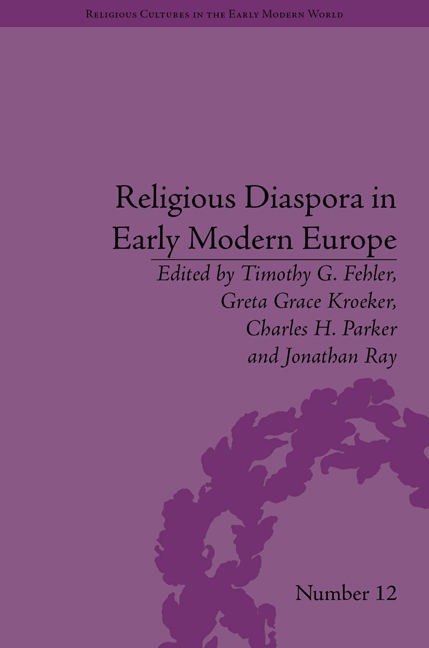Book contents
- Frontmatter
- CONTENTS
- Acknowledgements
- List of Contributors
- List of Figures
- Introduction
- Part I Tactics for Inclusion
- Part II Programmes of Restoration
- 4 Exile, Education and Eschatology in the Works of Jan Amos Comenius and John Milton
- 5 Missionaries as Exiles: Calvinist Strategies for Restoration in Communities under the Dutch East India Company
- 6 Niccolò Guidalotto da Mondavio and his City View of Constantinople (1662): The Experience of an Exile
- 7 Educating for Martyrdom: British Exiles in the English College at Valladolid
- Part III Methods of Coping
- Notes
- Index
6 - Niccolò Guidalotto da Mondavio and his City View of Constantinople (1662): The Experience of an Exile
from Part II - Programmes of Restoration
- Frontmatter
- CONTENTS
- Acknowledgements
- List of Contributors
- List of Figures
- Introduction
- Part I Tactics for Inclusion
- Part II Programmes of Restoration
- 4 Exile, Education and Eschatology in the Works of Jan Amos Comenius and John Milton
- 5 Missionaries as Exiles: Calvinist Strategies for Restoration in Communities under the Dutch East India Company
- 6 Niccolò Guidalotto da Mondavio and his City View of Constantinople (1662): The Experience of an Exile
- 7 Educating for Martyrdom: British Exiles in the English College at Valladolid
- Part III Methods of Coping
- Notes
- Index
Summary
The Venetian Franciscan friar Niccolò Guidalotto da Mondavio explains in his manuscript that he has drawn his vast panorama of Constantinople from the vantage point of Galata on the Christian bank, and that he chose this of three possible views because it was the safest. Had he made his drawings at sea (perhaps the best perspective of the three) he might have drowned, and if he had gone to the Asian bank he risked being taken for a spy. So, using his rough pen, he placed himself in a good position on the European shore from which he could design the panorama in safety and without danger from the Muslims. Both the author's inclusion of himself in the painting and his detailed explanation of his choice of vantage point lend credibility to the panorama as being the product of the meticulous observations of an eyewitness. Yet Guidalotto's statement regarding his position is indicative on a more profound level of his standing as a foreigner and a member of a Venetian delegation to a distant country. In his declaration, Guidalotto situates himself firmly in the European zone of Constantinople and in direct opposition to the Muslim city.
The theologian and cartographer Guidalotto was a chaplain in the Venetian embassy in Constantinople between 1647 and 1655, and was later banished from the city. After his return to Italy, Guidalotto painted a panorama of Constantinople.
- Type
- Chapter
- Information
- Religious Diaspora in Early Modern EuropeStrategies of Exile, pp. 75 - 92Publisher: Pickering & ChattoFirst published in: 2014



